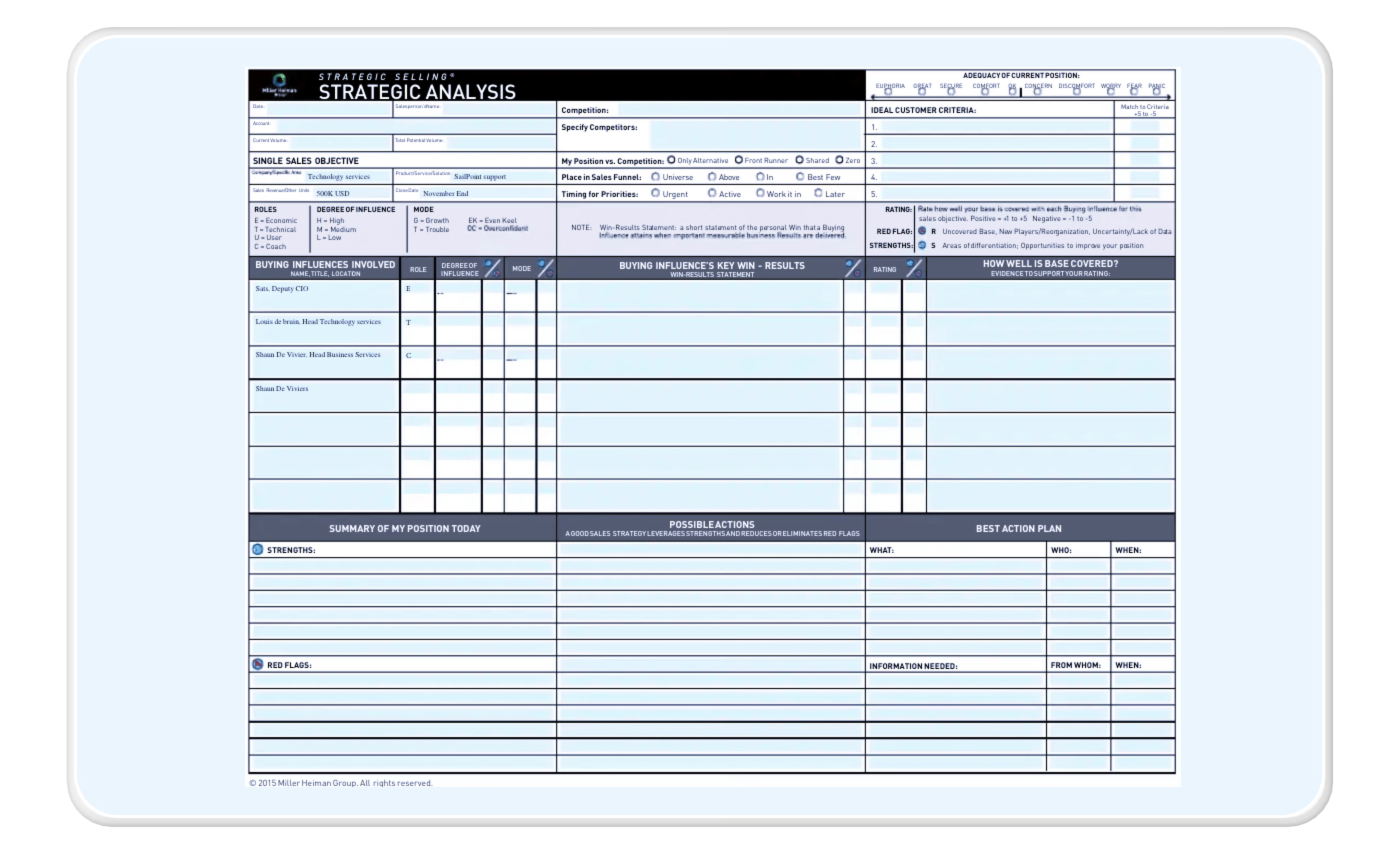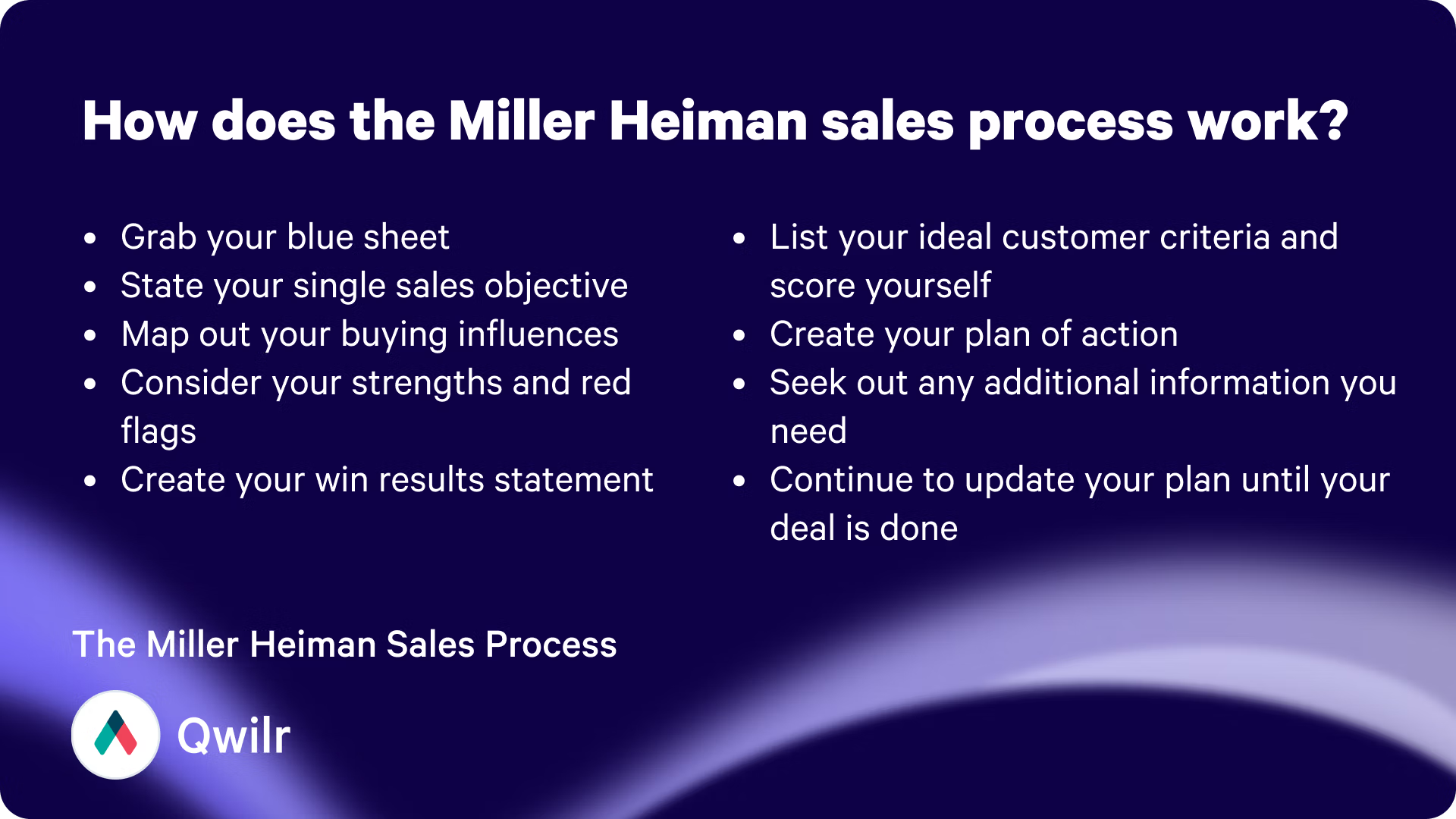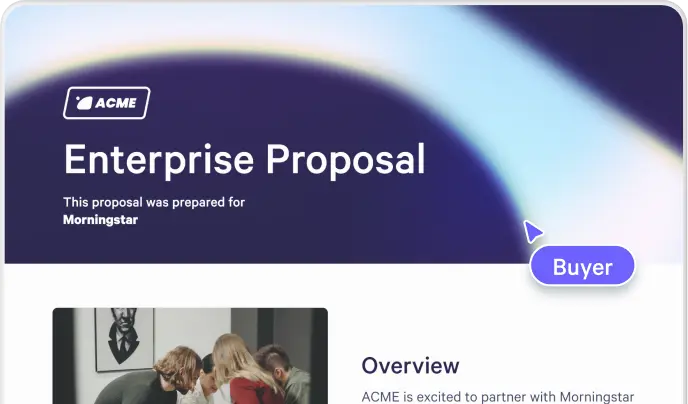

As a salesperson, if you work in a complex selling environment, you’ve probably been told to be more strategic at least once, if not more than once. But you probably weren’t given any guidance or coaching around what this means.
Sure, you can do some research and seek something to use to your advantage, but what does it mean to build out a sales process that’s centered around strategy?
On the flip side, if you’re reading this article as a sales leader, you may be wondering how to help your sellers be more strategic and what sales tools, resources, or coaching you can provide them.
To help and provide some insight into a more strategic sales approach, we will take you back in time. Four decades ago, to be precise. This is when Robert Miller and Stephen Heiman published their bestselling book, The New Strategic Selling.
The Miller Heiman strategic sales process is adept at handling complex B2B transactions, emphasizing win-win outcomes for both parties involved. It focuses on empowering sellers to assist buyers in overcoming challenges and maximizing ROI, fostering enduring and mutually beneficial partnerships.
Miller Heiman's strategic selling process is centered around the iconic blue sheet. The blue sheet provides a framework for developing a winning strategy - regardless of your competition.
When initiating a new sales process, the blue sheet helps you map out your sales objective, buying influences and their degrees of influence on the deal, the criteria and your solution’s alignment with them, red flags and success factors, and known and unknown factors that contribute to your ability to achieve your sales objective.
While this sales methodology may be a bit dated, it still works well in a modern sales environment.
The Miller Heiman sales process is unique in how it guides salespeople to gather and analyze information and build relationships to help them solidify their position with their prospects. The blue sheet information gathering will start early in the sales cycle and will be a living document.

It can be revised over time by uncovering more of the needed information throughout conversations with the decision makers, also known as buying influences in the Miller Heiman process.
Are you curious about how this process might work in your organization? Let’s walk through the blue sheet and how to fill it out. Note that this walkthrough is a general explanation of the process and does not replace formal training for your sales team.

Before diving deeper into the specifics of the Miller Heiman Sales Process, it's crucial for sales teams to understand what this approach can offer them and what potential challenges they may face.
As with any strategy, it brings a unique set of strengths that have been celebrated by many organizations worldwide. Yet, there are considerations that one must ponder to ensure the fit is right for their team's structure, market, and sales complexity.
Here’s a balanced snapshot that can guide you in this decision-making process:
Additionally, comparing the Miller Heiman approach with other methodologies, like MEDDIC, MEDDPICC, and BANT, as well as considering the adaptability of your team, are steps that should not be overlooked.
In order to kick off the process, you’ll need a blue sheet. In the past, this was a physical piece of blue paper in the famous format. The story goes that when printing out the original sheets, the printer was out of white paper, so they were printed in blue. The color stuck, and that’s how they got the name. Today, there are electronic versions (that aren’t blue anymore), and some CRMs have the blue sheet built in so that the data can be used for forecasting and other reporting and to have a single source of truth regarding client contacts and deals in the pipeline.
Miller Heiman strategic selling simplifies the sales process by distilling the goal down to one single sales objective. This objective should be a win-win for both buyer and seller. A good single sales objective is extremely specific. For example, an enterprise SaaS sales executive looking to close a deal with Coca-Cola might say their single sales objective is to sell $45 Million worth of their software to Coca-Cola.
Miller Heiman’s process is designed so that salespeople need to meet and engage with multiple stakeholders in the prospect’s organization. This is because, in a complex sales environment, these stakeholders all have different needs and. input into a final decision. Failing to understand the needs and goals of any of these key players can cost a salesperson the deal. Miller Heiman categorizes buying influences into the following:

Miller Heiman doesn’t just ask sales reps to identify these players. It further asks them to rate the degree of influence of each buying influence as high, medium, or low. For example, a technical buyer with a low degree of influence may or may not be concerning depending on how technically complex your solution (and single sales objective) is.
The other way you’ll analyze your buying influences in this methodology is by how they feel about changing the status quo. You’re looking out for:
Automate the manual work reps hate: creating personalized sales assets
Find out how
The blue sheet also asks sellers to list out and consider their strengths and red flags. This could include differentiators, customer needs or requirements, and any perceived weaknesses. For example, if you’re selling financial modeling software to smaller and medium-sized businesses, a strength could be your product’s scalability and ability to grow with a business. A red flag may be that your sales model requires a finance team of at least five people in order for your solution to be financially viable.
When doing this part of the exercise, it helps to consider the pain points of each of they key decision-makers and evaluate how your product or service can support their organization in solving these.
Get ready to win your deal by creating your win results statement for each of your buying influences. These statements are like seeing into the future. They should answer the question, “How will this person win when my product or service delivers on its promises?”
Miller Heiman’s philosophy centers around creating deals that are a win-win. This means your statement needs to help show that the deal you’re working on is a win for both the sales rep and each of the buying influences.
One thing to consider here - if slashing your prices down to the very bottom is the only way you can win the deal, you don’t have a win-win situation.
If you’re still in the game and working through your blue sheet, the next step will be to list your ideal customer criteria - what is your ideal customer looking for in this sales process, and how will they know if they’ve found it?
After you’ve made your list (and checked it twice - maybe with your champion), you’ll get really honest with yourself and score your solution on how it measures up to the criteria. Where are you able to win easily, and what will you need to proactively address to achieve your single sales objective?
The key to successful sales, regardless of methodology, is a plan of action, but the Miller Heiman methodology mandates creating one as part of the blue sheet. No matter how experienced you are as a sales professional, it’s important that you don’t skip steps in the blue sheet and that you follow the process to collect and act on all of the information.
This plan of action will help you to win your deal and also build long-term relationships along the way.
Your plan may involve many touch points with all of your buying influences across the decision-making process. You might need to make regular sales calls and hold a number of sales meetings and conversations in order to execute your plan and get the information you need to keep moving your deal forward.
Once you’ve got as much of the blue sheet completed as possible and you’ve completed your plan of action - the first thing you still need to do is to seek out any additional information you need.
This might be accomplished by working with your coach, or any of the other buying influences, to get your questions answered; or by meeting with your sales manager to determine the best path forward and a sales strategy to improve your ability to close the deal and manage your sales performance.
Your blue sheet is not a static document that is one and done. As you and your team progress through the sales process and guide your prospect to buying decisions, you may learn more about your strengths, red flags, and how well you’re actually covering your bases. Through additional sales meetings and conversations, you may uncover more of the information you need to close the deal (or walk away if the number of red flags continues to grow)

The Miller Heiman process may be right for your sales organization if you sell products, goods, or services to organizations with multiple stakeholders. Generally, organizations who sell to enterprise organizations can benefit from using Miller Heiman, but any sales team that sells to multiple stakeholders and needs to build long-term customer relationships within their prospect and client organizations can benefit from the Miller Heiman Sales Methodology.
You’ll want to invest in some sales training. Miller Heiman was sold to Korn Ferry in 2019, but the full suite of Miller Heiman training is still available to sales organizations. Having an experienced Miller Heiman trainer walk your team through the methodology and how to fill out the blue sheet can speed up the learning curve greatly for sellers and sales leaders.
Increase deal velocity, get buyer insights from content, and give reps more time to sell
Find out how
While the blue sheet is one of the most popular Miller Heiman offerings, it’s not the only one. Miller Heiman Large Account Management Process (gold sheet), Conceptual Selling, and are other processes your team can leverage to help close deals and streamline processes.
Once you have your blue sheet (or any of the other Miller Heiman processes) completed, you can use the information you’ve obtained to craft a winning sales proposal. And this is where Qwilr comes in. We can help you create sales materials to highlight your strengths to all of your buying influences at multiple points in your sales process.
Our integrated analytics capabilities can further help sales teams understand what is resonating with each buying influence! Want to see it in action? Book a demo now.

Marissa Taffer | Founder & President of M. Taffer Consulting
Marissa Taffer is the Founder & President of M. Taffer Consulting. She brings over 15 years of sales and marketing experience across various industries to a broad range of clients.
The Miller Heiman Sales Process was developed by Robert Miller and Stephen Heiman. With their innovative approach, they transformed the landscape of sales strategies, highlighting the significance of forging genuine connections and comprehending the buyer's requirements for fruitful collaborations.
The four types of buyers in Miller Heiman Strategic Selling are the User Buyer, The Technical Buyer, The Economic Buyer, and the Champion.
The ideal customer criteria section of the blue sheet encourages sellers to find out the criteria their customer is measuring them against. They then need to rate their match to each criterion on a scale of -5 to +5.